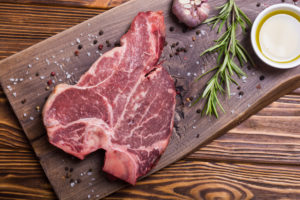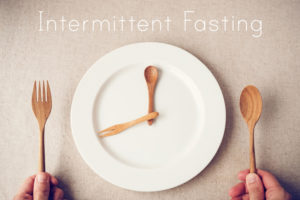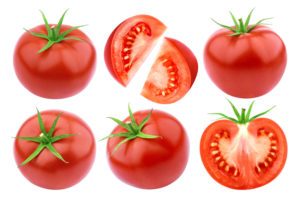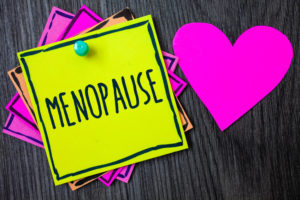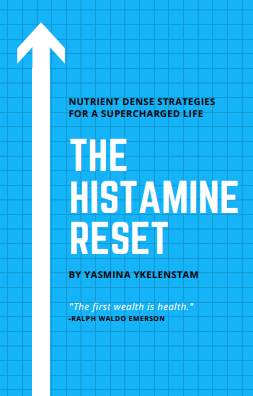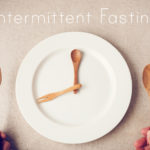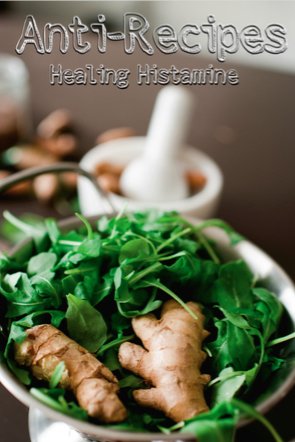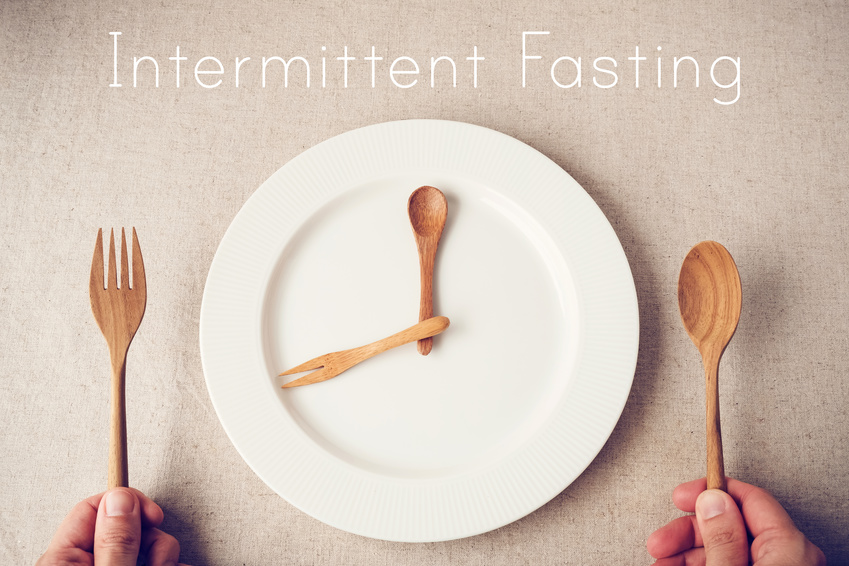
Warmer weather in the summer often makes us think about eating a little lighter, perhaps incorporating some juicing, doing some detox protocols, and even fasting. Of course, living on water only for days at a time, while highly anti-inflammatory and antihistamine, isn’t for everyone. But even if strict, no-food fasting isn’t on your radar, you can still benefit from partial, or intermittent, fasting. It isn’t that difficult, and you may be loosely doing it already.
OVERVIEW OF INTERMITTENT FASTING
You already fast daily. That’s why your first meal is called break-fast. People typically already fast for 12 hours a day, between 6 pm and 6 am or 8 pm and 8 am, for example. However, when we talk about intermittent fasting (IF) — going in and out of fasting periods and eating periods — we’re generally referring to lengthening that fasting period past the 12 hours to perhaps 16 or 18. You’re basically just restricting your daily eating times to within a 10- or 8- or 6-hour window. No big deal. Totally doable.
BENEFITS OF FASTING FOR HISTAMINE INTOLERANCE
Fasting, in general, has been shown to have a number of benefits for histamine intolerance:
- Animal studies indicate fasting prevents histamine release from mast cells and thereby improves symptoms.
- Fasting may improve digestive symptoms (common for us), including abdominal pain, diarrhea, and nausea.
- Fasting lowers proinflammatory cytokines in the body and lowers systemic inflammation (also very common for us — see the inflammation bucket).
- Dr. Valter Longo’s fasting-mimicking diet has been shown to eliminate up to 40% of faulty immune cells. This includes damaged or hypersensitive mast cells. You can listen to my interview with Dr. Longo on his Fasting-Mimicking Diet (FMD) here.
- A published case study found that fasting alleviated chronic hives.
WHY INTERMITTENT FASTING IN PARTICULAR?
Chronic fasting isn’t a long-term solution, for a few reasons. One of them is that longer-term fasting is actually a stressor on the body. Those of us with crazy stressed out mast cells already don’t necessarily want to put more stress on our bodies. We have to remember that technically our body goes into “starvation mode” when we’re on a complete water fast. Starvation? Yeah, no wonder that body freaks out a bit.
Also, we do eat for a particular purpose, after all — to gain valuable nutrients that our body needs to function properly. If we keep restricting nutrients, our body is going to start shutting down due to lack of basic building blocks. That’s why there are “essential” amino acids and “essential” fatty acids. We have to get them in through our diet and they are critical for all kinds of basic functions in the body, particularly in the building of proteins, including enzymes.
Now, one enzyme we’re really familiar with is diamine oxidase (DAO), the enzyme that helps break down histamine. Well, in order for DAO to properly function, we require certain vitamins and minerals like B6, magnesium, copper, and a number of others. Constant fasting isn’t going to help us keep these levels up. And of course, that’s just one example. Read more about fasting and DAO here.
So, chronic full-out fasting may not be an option, but daily intermittent fasting totally is.
HOW TO INTERMITTENT FAST
It’s pretty simple — just start by adding an hour to your usual overnight fast. Start by stopping eating earlier. Most health professionals are doing to suggest not eating within 3 hours of bedtime. So, if you’re “lights out” at 10 pm, you’d ideally stop eating by 7 pm and not eat breakfast until 7 am or after. If that’s the case already, try ending your meal by 6 pm so that you have an 11 hour fast until breakfast at 7 am.
WHEN YOU’RE NOT FASTING…
Intermittent fasting is just one component of a healthy, histamine-lowering, dietary and lifestyle plan. If you’re kind of wondering what you should eat when you do eat, I’ve got you covered. When you’re not fasting, it’s important to put plenty of healing foods in, so that your body has the nutrients it needs to do the repair when you are fasting. Getting those foods in, plus stress relief, meditation, and other balancing lifestyle strategies are the key to restoring your health and your body’s relationship with foods. That’s what my 28-day program, the Histamine Reset, is all about.
——- REFERENCES ——-
Aly, S. M. (2014). Role of Intermittent Fasting on Improving Health and Reducing Diseases. International Journal of Health Sciences, 8(3), V–VI.
Kanazawa M. & Fukudo, S. (2006). Effects of fasting therapy on irritable bowel syndrome. International Journal of Behavioral Medicine, 13(3), 214-20. Retrieved from: https://www.ncbi.nlm.nih.gov/pubmed/17078771
Marinac, C. R., Sears, D. D., Natarajan, L., Gallo, L. C., Breen, C. I., & Patterson, R. E. (2015). Frequency and Circadian Timing of Eating May Influence Biomarkers of Inflammation and Insulin Resistance Associated with Breast Cancer Risk. PLoS ONE, 10(8), e0136240. http://doi.org/10.1371/journal.pone.0136240
Nakamura, S, et al. “Fasting mitigates immediate hypersensitivity: a pivotal role of endogenous D-beta-hydroxybutyrate.” Nutrition & metabolism., U.S. National Library of Medicine, 28 Aug. 2014, www.ncbi.nlm.nih.gov/pubmed/25302070.
Okamoto, O., Murakami, I. Itami, S., & Takayasu, S. (1992). Fasting diet therapy for chronic urticaria: report of a case. Journal of Dermatology, 19(7):428-31. Retrieved from: https://www.ncbi.nlm.nih.gov/pubmed/1401501


